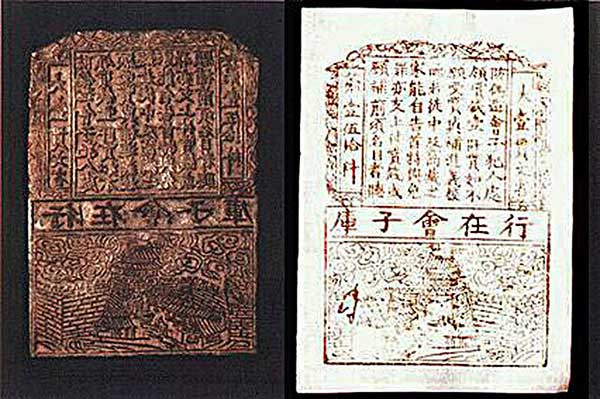China – the Birthplace of Book Printing
Despite the fact, that book printing had not been a wide-spread phenomenon in China, this country had been the cradle of first printed books and tampon printing on pens. The following reasons led to such fateful occurrence. Firstly, writing skills had been considered as an art. Secondly, the sophisticated symbols of the Chinese hieroglyphic system required a complex printing technique.
The art of beautiful handwriting, aka calligraphy, was regarded as one of the cardinal virtues and key skills. The talent to elegantly depict hieroglyphs was of extreme value, calligraphy masters were paid handsomely. Most frequent orders were name plates that were hung on the walls of the house, something the owner could be proud of. Collectors and connoisseurs repurchased calligraphic chefs d’oeuvre by famous masters sparing neither effort, nor coin. That’s why it was hard for the Chinese to come to terms with the idea that the art hieroglyphic writing could transform into a simple imprint on paper, like a postcard.
Originally, as in other countries, the Chinese used xylography, that is, printing from a special board, on which a mirror outline of the text was carved. The board was then covered with paint and applied to paper. Xylography’s main fallacy is that carver’s single error could spoil the entire page. And you had to start all over again. These wood panels were pretty time-consuming bastards. The first xylographic book, that had survived to this day, was a religious edition, executed by Wan Chin, the mighty Diamond Sutra, a core Buddhist text.
At first sight, xylographic books looked like brochures, a sort of notebooks, comprising several pages, bound together. The Chinese books, however, could be distinguished by a typical black frame encasing the text. This design became a distinctive feature of Chinese books, recognizable around the world. Some hieroglyphs form those books gained wide popularity and are still used across the world, e.g. in logos on mugs.
As we said above, those books were pretty time-consuming bastards. However, this technique was much faster than recurrence to human copyists’ services. Moreover, Chinese typographers attained high quality levels of xylographic books manufacturing. Thus, as early as the XVIIth century, while Europe was only commencing to discover the art of printing, the Chinese produced high quality colour printed books with astounding calligraphic texts. This partly explains the reason why China is recognized worldwide as a leader in printing industry.
 China – the Birthplace of Book Printing
China – the Birthplace of Book PrintingSource:
Calligraphy is the flower of a man′ s soul.



